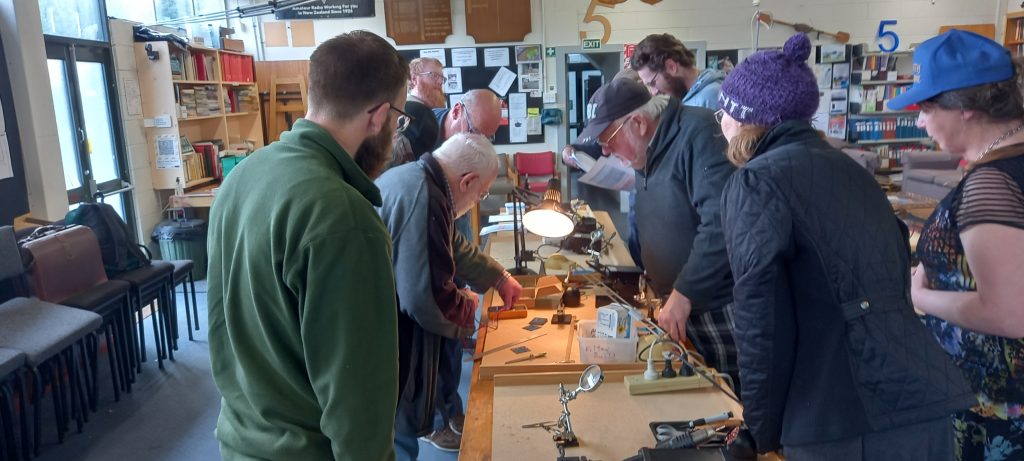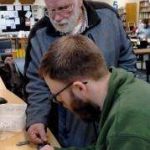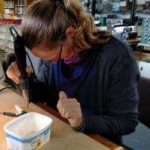On Sunday there was almost no sun as Christchurch Amateur Radio Club, clubrooms buzzed like a beehive with lots of busy bees buzzing. Turns out that this was the big day of constructing the 2-metre filter projects.
Keith Birse ZL4JA has been the driving force behind this project. He demonstrated a prototype filter at the Homebrew evening awhile back, and the results, at the clubrooms, were remarkably good.
He was assisted by Tim ZL3PIE and some others. Seven candidates tried their hand at the construction. Some being old hands who’d soldered up many homebrew projects before, and some with less experience. Some people settled right into it and demonstrated an inherent knack for one aspect or another.
Even those used to “normal” soldering may have had no experience before with SMD. Surface Mount Devices which are soldered into place using a thermostatically controlled Hot Air Gun, as opposed to the conventional soldering iron (although those are still used for larger components, like some fine brass stiffening rods and the SMA coax connectors).
But even before that stage, the PCBs had to be trimmed closely, then brass pieces cut to size and cleaned up and coils individually custom wound.
The SMD components themselves are about a quarter the size of a grain of rice. Pretty close to the definition of “microscopic” in my opinion (and apparently these are a larger type. Many others are even smaller).
Indeed, a type of microscope which puts an image onto a display screen was one of the pieces of special equipment in use that day, as well as the hot air soldering stations.
A homemade jig used drill bits to accurately size the diameter of the needed coils. Some hollow brass tube sections were soldered to the underside of the PCB to give some extra strength.
After a break for lunch, at 1pm Kelvin ZL3KB gave a talk on how a (nano)/VNA can be used to tune the filters, once completed.
Best results will be noticed when connecting a Baofeng (or other cheap Chinese radio) to an external antenna and while using them on the VHF band, in longer distance Simplex operations.
The filter unit, once correctly tuned, greatly reduces stray signals that spill over from the normal FM Broadcast station band (88 to 108 MHz.), which, with radios with cheap innards, is just a bit too close to the 146 MHz. Amateur frequencies.





Those present were making good progress but as the day wore on, and as I had other commitments to be elsewhere, just after 3pm, I distracted the crew with some ice-cream’s and escaped early. I’m not sure if some filters got finished and tested after I left, but it is my understanding that another day or evening will be timetabled soon, to complete any unfinished filters.
This day seemed to be very successful and given that construction with SMD surface mount components is new to most of the participants and a steep learning curve, this was a great initiative by the club and hopefully just the start of things to come.
Thanks to all involved, including those helping.
Words & photo provided by ZL3CATH


